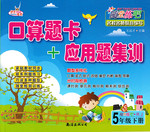题目内容
With the effects of global warming, trees their leaves much later in the year.
| A.are losing | B.have lost | C.lost | D.were losing |
A
解析

 口算题卡加应用题集训系列答案
口算题卡加应用题集训系列答案The average college student in America spent an estimated seven hundred dollars on textbooks last year. The National Association of College Stores reported more than five billion dollars in sales of textbooks and course materials. Association spokesman Charles Schmidt says electronic textbooks now represent just two to three percent of sales. But he says that is expected to reach ten to fifteen percent by 2012. Online versions are now available for many of the most popular college textbooks. E-textbooks can cost half the price of a new print textbook. But students usually lose access after the end of the term. And the books cannot be placed on more than one device (装置) so they are not easy to share.
So what do students think of e-textbooks? Administrators at Northwest Missouri State University wanted to find out. Earlier this year they tested them with five hundred students in twenty classes. The university is unusual. It not only provides laptop computers to all seven thousand of its full-time students. It does not require students to buy their textbooks either. They rent them to save money. The school aims to save even more by moving to e-textbooks. The students in the survey reported that downloading the books from the Internet was easy. They liked the idea of carrying lighter backpacks. And fifty-six percent said they were better able to find information. But most found that using e-textbooks did not change their study habits. And sixty percent felt they read more when they were reading on paper. In all, almost half the students said they still liked physical textbooks better. But the survey found that cost could be a big influence. Fifty-five percent said they would choose e-textbooks if using them meant their textbook rental fee would not increase. Roger Von Holzen heads the Center for Information Technology in Education at Northwest Missouri State. He tells us that administrators are disappointed with the e-textbooks now available because the majority are not interactive. He thinks growth will come when more digital books include video, activities, games and other ways to interact with the information. The technology is improving. But for now, most of the books are just words on a screen.
【小题1】The passage mainly tells us about ________.
| A.the development of e-textbooks |
| B.different attitudes towards e-textbooks |
| C.the sales of textbooks and course materials |
| D.the differences between e-textbooks and physical text-books |
| A.can be rented for less money | B.help in finding more information |
| C.are convenient to carry around | D.help them do better in their lessons |
| A.will replace physical textbooks | B.are available at any time |
| C.have a very bright future | D.still have a lot to improve |
Restaurants in Europe, the United States and Japan are testing technology to let diners order their food direct from a screen at their table instead of depending on a fellow human being to note their choice.
Besides cutting costs, companies that sell the “e-menus” argue the bytes-for-bites way has a new value that can attract younger customers, and various photographs of steaks and gooey desserts attract diners to order more. It also could extend the TV dinner. How about a computer game dinner?
“It's about impulse-buying,” said Adi Chitayat, Conceptic’s CEO. “If a person starts looking at pictures of chocolate cake, the chances are he'll order it.” Frame, a restaurant in Tel Aviv with the system, is said to have its sales on tables with the e-menu increased by about 11% . Customers often call ahead to reserve (预定)spots equipped with screens, manager Natalie Edry told Reporters.
At one of the e-menu tables, IT worker Gil Uriel and his young family were enthusiastic as they checked out pictures of the dishes on offer and squabbled(争吵)overdesserts. “It’s more visual,” says Uriel, as his children clicked away furiously on a games function between courses. “We can still choose, we can still argue —but it’s much easier when we can all see it.”
【小题1】The following are the advantages of “restaurants with” EXCEPT that .
| A.eating in them is more comfortable |
| B.the restaurants can save a lot of money |
| C.they can attract more youngsters to the restaurants |
| D.customers can see the pictures of their ordered foods |
| A.having no idea in buying things |
| B.being uninterested in buying things |
| C.having no patience in buying things |
| D.being encouraged in buying things |
| A.customers feel little interest in the e-menus |
| B.e-menus only attract a small number of customers |
| C.it still takes time for e-menus to be widely accepted |
| D.restaurants of this kind are refused by customers |
| A.a food guide | B.a website |
| C.a traveling magazine | D.classic advertisements |